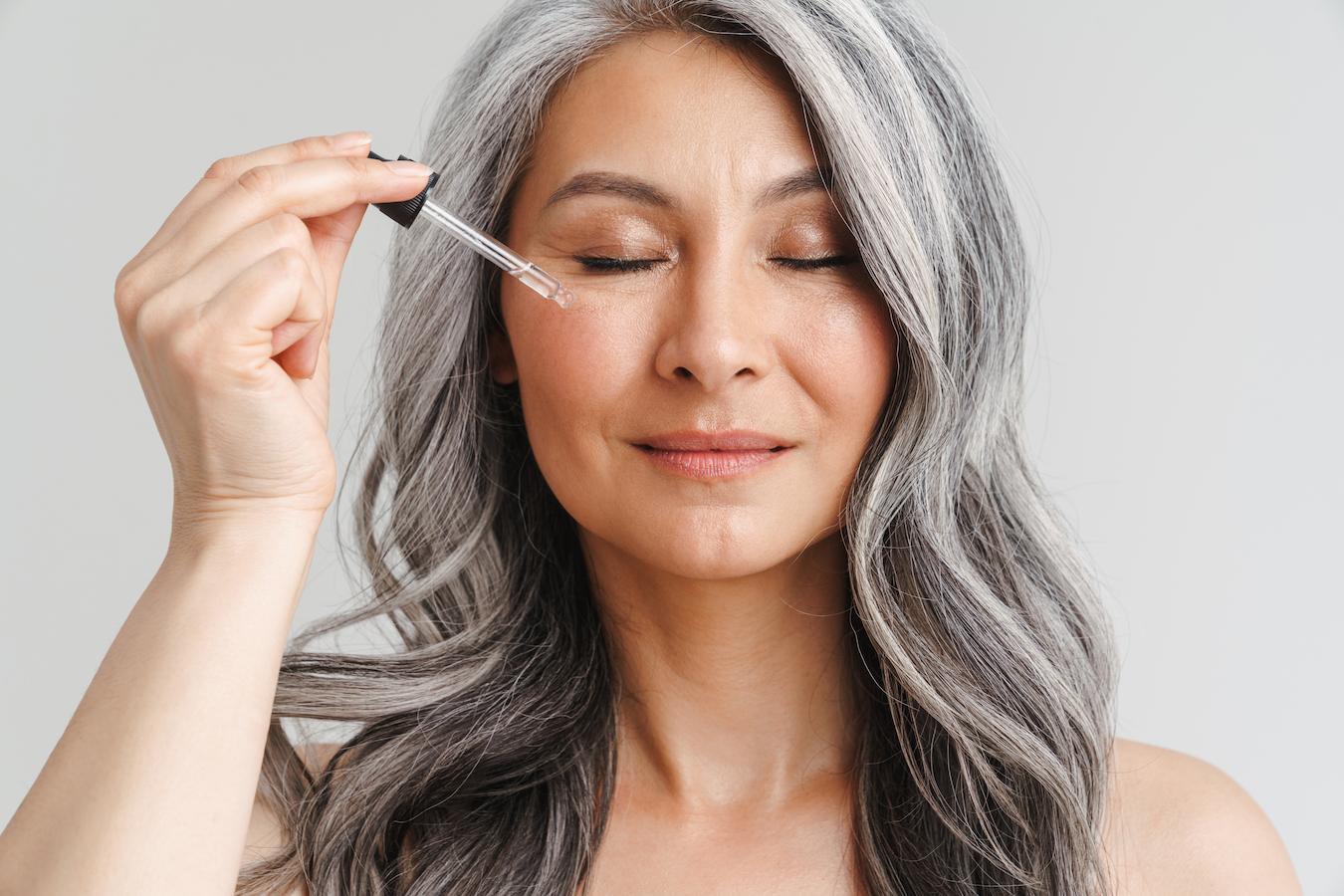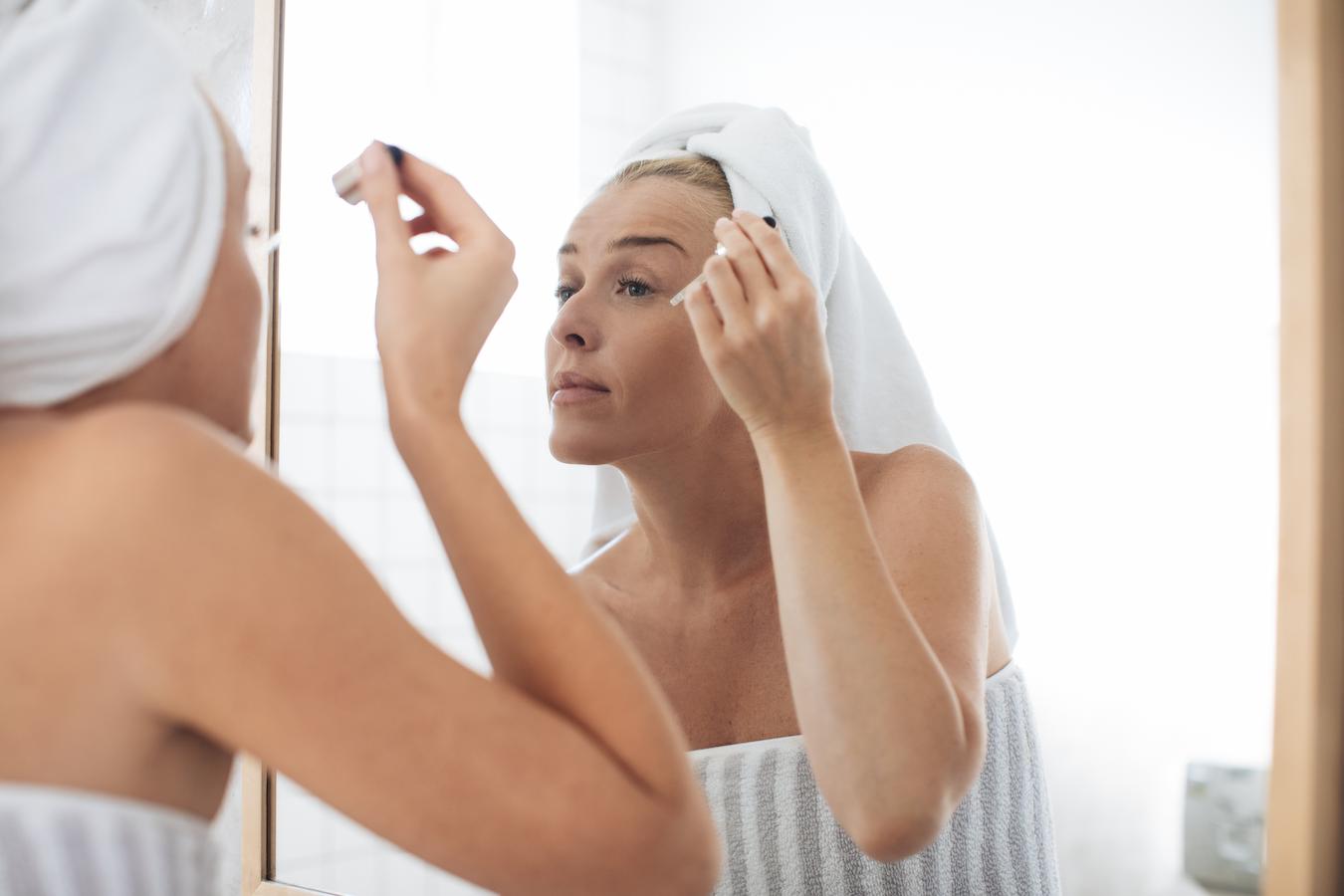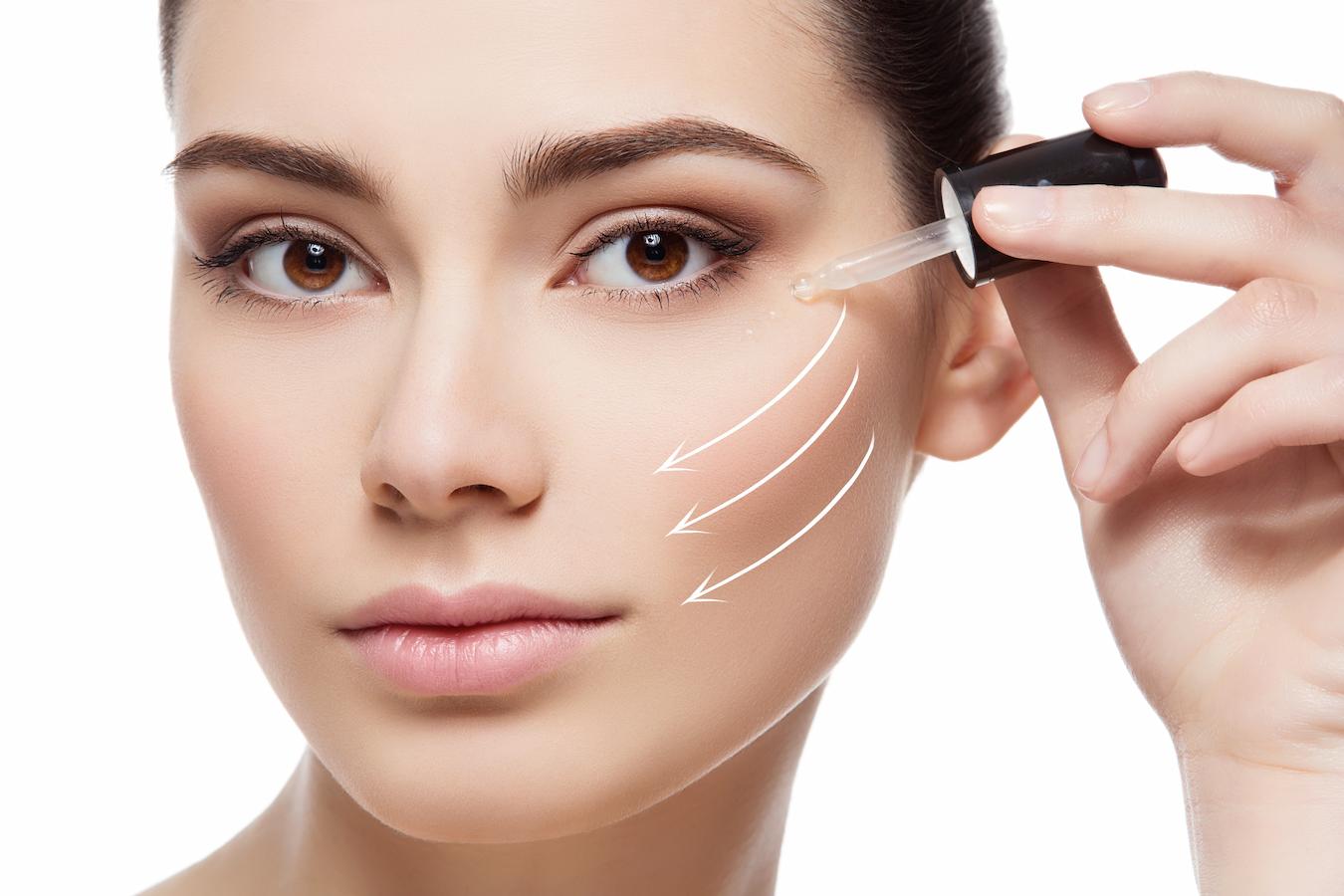How To Use Hyaluronic Acid
The beauty world has been buzzing with the term “hyaluronic acid” for quite some time now. And if HA molecules could win a medal for best all-around compound, we’re sure it’d win big time.
(Well, that and “a glycolic acid exfoliator” and “vitamin C.” But this isn’t a popularity contest, right?)

But many people still don’t know exactly how to use hyaluronic acid in their skincare routine. And we think that’s a blatant oversight.
Everyone should know how to yield the power of this miracle compound. Not just those with dry skin, but those of all skin types.
So, we’re here to give you the power back. Hyaluronic acid is something that everyone can benefit from, so let’s see how you can incorporate it into your skin care routine.
See Related: How To Use Glycolic Acid
What is hyaluronic acid?
Let’s start with the basics. What is hyaluronic acid? Other than a word it probably took you a couple of times to try and pronounce correctly?
Well, hyaluronic acid is a molecule, first and foremost. And you can actually find hyaluronic acid naturally in the body.
It shows up in your bones, cartilage, tendons, ligaments, lips, and connective tissue. And it essentially acts as a cushion to help your skin and joints retain moisture.
In fact, it can bind up to 1,000 times its own weight in water. So this humectant is surely one that you can depend on to keep your skin hydrated and moist.
Over time, our natural production of hyaluronic acid begins to deplete. And that’s exactly why we turn to skincare products with hyaluronic acid as we age.
Furthermore, hyaluronic acid can attract moisture and pull it into the deeper layers of your skin. So it’s not just hanging around, latching onto whatever moisture it can find.
It’s actively seeking it out. And making sure you retain more moisture than ever.
That sounds like a compound that’s really doing its job, don’t you think? (Okay, we’ve all been there while trying a new product and seeing absolutely no progress whatsoever.)
How to use hyaluronic acid products
There are quite a few skincare products for you to choose from nowadays. But here’s exactly how you can incorporate a hyaluronic acid serum or moisturizer into your routine.

(That being said, if you’re just introducing your skin to hyaluronic acid, start with a patch test. Just to make sure you don’t suffer any allergic reactions!)
#1. Cleanse
Start by washing your face with your favorite cleanser. This will help prep the skin for absorption and get rid of any other dirt or impurities on your face.
Besides, this is a great way to start your day and end your day in general. So if you’re cleansing, our question is, “Why not??”
#2. Tone
Before you start to pat your skin dry, don’t! You’ll want to keep that moisture close by. (Literally.)
So if you use a toner or facial mist, make sure you maintain that damp skin. It might seem counterintuitive at first.
But do your best to keep your skin damp before going on to the next step. (We promise you won’t regret taking this piece of advice!)
#3. Use a hyaluronic acid serum
Next, you can apply a few drops of your hyaluronic acid serum to a damp face. You know, the one you said you wouldn’t pat dry afterwards.
And why? Well, remember how we said that hyaluronic acid draws moisture in?
Well, you’re literally providing moisture when you have damp skin. So you don’t want it to miss out on any other moisture you might have dried off.
Follow up immediately with a moisturizer to make sure you lock in that hydrated skin. Trust us, your hyaluronic acid serums love to be accompanied by another layer of moisture.
#4. Or opt for a hyaluronic acid moisturizer
If you want to use hyaluronic acid in your moisturizer instead, you can forgo a hyaluronic acid serum. Instead, you’ll be using this step to draw moisture from damp skin.
So, using whatever serum you like, apply your best hyaluronic acid moisturizer afterward to lock in whatever benefits your serum has to offer. Or, apply after exfoliating or cleansing with vitamin C or glycolic acid.
Really, whatever floats your boat when it comes to a skincare routine. Either way, your skin will thank you for that extra boost of hydration from an HA serum or moisturizer.
#5. Follow up with sunscreen
There are certain claims in the beauty world that hyaluronic acid offers sun protection. (And that it’s wound healing too.) But there is little scientific evidence to suggest either of these.)

Instead, you should always follow up with sunscreen in your skin care routine. Especially if you’ve used an HA serum or moisturizer.
Hyaluronic acid will first and foremost give you plump skin. But you’ll want that moisturized skin to stay protected from any UV rays lurking around.
(We know we said it was a miracle compound. But even miracles have their limitations too.)
#6. Use your hyaluronic acid products twice a day
To get the most out of your hyaluronic acid, you’ll want to apply it twice a day. This way, you’ll get to start your day with topical HA and end it that way too.
And if you don’t think a routine like this is important, then think again. Your skin needs to be pampered on a regular basis.
And making this a part of your daily routine will only strengthen your skin all the more. So no, you don’t have to feel like it’s selfish doing your skin care routine twice a day.
In fact, it’s smart! So give yourself a pat on the back. And face. But not before applying your HA serum!
Bonus: A Guide On How To Get Clear Skin
Different types of hyaluronic acid
By now, you must feel like an expert on all that is hyaluronic acid. But we’re here to throw a plot twist into the mix – because there are 3 different types of hyaluronic acid!
(Bet you didn’t see that one coming. Well, we had fun with that surprise while it lasted…)
So let’s see what each of them offer. And which ones you’ll want to use alongside your other skincare products.
Hydrolyzed hyaluronic acid
This type of hyaluronic acid has a lower molecular weight than its other HA counterparts. And that’s because the molecules themselves have been chopped up into smaller bits.

Typically, dermatologists tend to recommend this type of hyaluronic acid to people with sensitive skin. So if you’re at all worried about how hyaluronic acid may impact your skin care, start with this type of HA.
In general though, hyaluronic acid shouldn’t pose any irritating factors. But if your skin is like a little Goldilocks, consider this type of HA your perfect pot of porridge.
(Try saying that ten times fast. That’ll surely boost elasticity in your skin!)
Sodium hyaluronate
If you’re thinking that this is hyaluronic acid in salt form, you’re not entirely off the mark. Sodium hyaluronate is what happens when you bind hyaluronic acid with sodium.
And these molecules tend to hold lower molecular weights than pure hyaluronic acid as well, furthering their ability to penetrate the skin deeper. Not to mention it allows them to hold more moisture in too.
Some say that sodium hyaluronate is actually more hydrating than HA itself. But this also boils down to personal preference.
As we said earlier, HA in general won’t cause irritation. But if you find this type of HA to be particularly effective for your skin, then more power to you and your newfound skincare buddy!
Sodium acetylated hyaluronate
If hyaluronic acid were to be turned into a superhero, it’d become this. Sodium acetylated hyaluronate has also been called super hyaluronic acid so, you know, it tracks.
And that’s because it’s an advanced type of hyaluronic acid with increased moisturizing abilities. If that doesn’t sound like a job for an anti-aging skin hero, then we don’t know what does.
Besides, this is a common form of HA that you can find in serums, eye creams, and facial cleansers. So when it comes to incorporating hyaluronic acid into your routine, this might even be the most accessible form.
That being said, hyaluronic acid is everywhere. So don’t worry too much about trying to find a specific type of this miracle compound!
Hyaluronic acid benefits
We’ve gone over how hyaluronic acid can help dry skin retain moisture. But that’s not all this miracle compound has to offer in the healthy skin department.
HA brings moisture to the skin
Okay, yes, we knew this. But did you also know that it can act as an antioxidant to protect skin from free radical damage?
Yeah. It’s not just a serum that can give you hydration galore. It can actually protect you from environmental stressors.
So it’s not to be taken lightly. Unless you’re taking it in a serum – or even an AHA serum, that is. Then it’s very light upon application!
Reduces the appearance of fine lines and wrinkles
When you have dry skin, it’s far easier to spot those fine lines and wrinkles. But hydrated skin helps to replenish those areas in need of a little hydration boost.

It is important to note that hyaluronic acid does not cure fine lines or wrinkles. Not even in the slightest.
But its fast-acting hydrating capabilities help to reduce their appearance. And that can keep your skin looking younger and softer than you ever dreamed of.
Absorbs quickly into the skin
Some skincare products can take a long time to absorb into the skin. And by the time they do, you’ve lost half the product!
Luckily, that’s not the case with hyaluronic acid. You can chalk it up to hyaluronic acid being a naturally derived compound in the body.
But its fast-acting molecules make sure you get the hydration you need and fast. Besides, this is good news for your wallet too!
Made for all skin types
Sometimes, those of us with skin sensitivities don’t get to join in on all the fun a new miracle compound has to offer. Simply because there’s the risk of irritation.
But hyaluronic acid is non-irritating and safe for all skin types to use. Actually, there are no known negative reactions to hyaluronic acid.
In fact, hyaluronic acid is known to work particularly well with vitamin C and other common skincare ingredients. So it not only gives your skin some peace, but it gives you peace of mind.
Increases firmness and elasticity
Throughout the day, our skin experiences quite a lot. From UV rays to pollution, from grimaces to laugh lines.
But hyaluronic acid makes sure that our skin can be resilient enough to muddle through these factors. And come out the other side with firmness and elasticity in our side.
Fights redness in sensitive skin
Another buzzword that hyaluronic acid can add to its chart is “anti-inflammatory.” Its properties are particularly good at combatting redness in the skin.
So if you’ve had a little too much sun exposure or you’ve been blushing far too much, then hyaluronic acid can even help you out then. Additionally, those who suffer from eczema have noted hyaluronic acid as an extraordinary helper.
Plumping up your skin care routine
Sometimes, skin care can feel like an uphill battle. After all, our skin changes day by day and we just have to keep up with it!
But hyaluronic acid allows us to take back just a little bit of control. Instead of chasing our skin back to its former glory, HA allows us to meet our skin where it’s at.
And add hydration and nourishment to our combined years of wisdom and life. So if you’ve been looking for something that’ll plump up your routine and give you something to write home about, consider HA products.
They’ve got a funny way of making everyone like them. And we don’t think we’ll be meeting anyone anytime soon who is an exception to that!
Keep Reading: When To Use A Facial Steamer
—
For over 60 years, Viviane Woodard has represented “The Purity of Skincare”. We are the leading beauty brand for skin care products and promote the importance of good skin hydration. Follow us on Facebook, Instagram, Twitter, and Pinterest for skin care tips, product discounts, and more.
